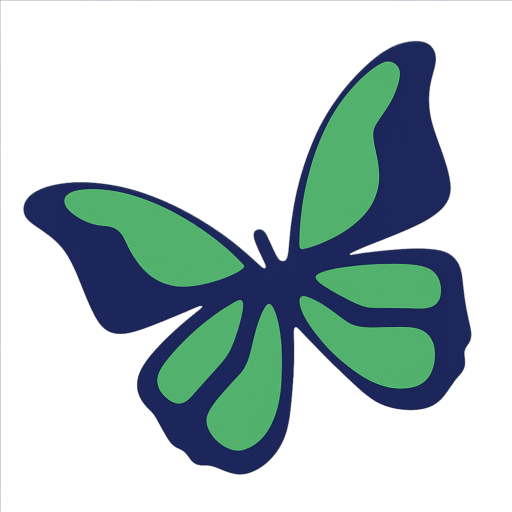Dukan Diet: 7-Day Meal Plan, Food List, and Risks Explained
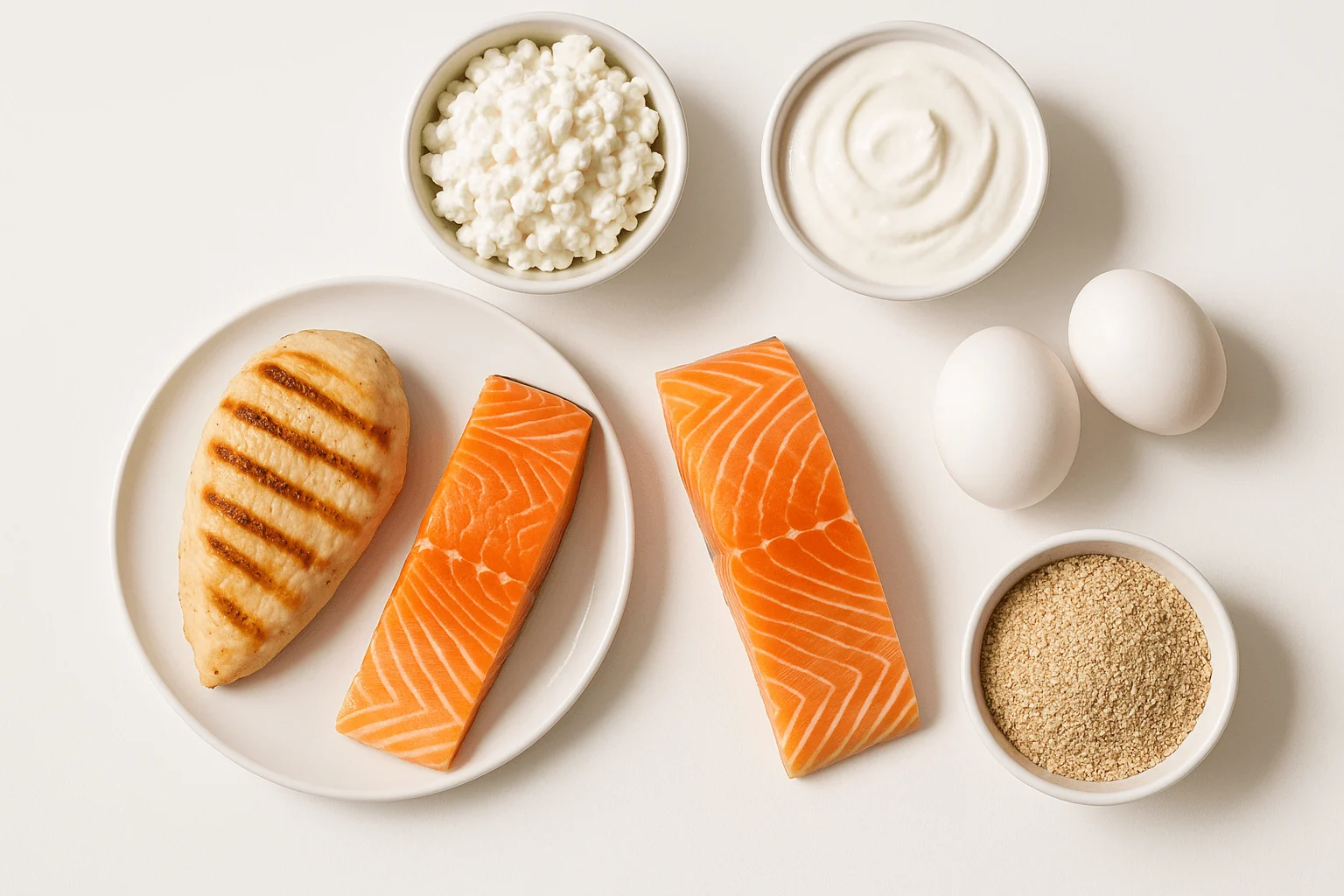
The Dukan Diet has become a well-known high-protein, low-carb plan for people in the United States who want quick weight loss. Designed by French physician Pierre Dukan, it promises fast results without calorie counting. But while the structure appeals to many, the diet also raises concerns about safety and sustainability.
This guide explains the four stages, provides a practical 7-day meal plan for U.S. readers, and answers the most searched questions about the diet.
What Is the Dukan Diet?
The Dukan Diet focuses on lean protein, limited carbs, and oat bran as its foundation. Unlike calorie-counting plans, it gives you a structured four-phase roadmap designed to move you from rapid weight loss to long-term maintenance.
The diet is stricter than keto because it cuts down on both fat and carbs, making protein the primary nutrient.
The Four Stages of the Dukan Diet
1. Attack Phase (1–7 days)
Goal: Rapid weight loss start.
Foods: Chicken, turkey, fish, seafood, eggs, fat-free Greek yogurt, tofu, seitan.
Requirement: 1.5 tablespoons of oat bran daily.
Activity: Walk for at least 20 minutes per day.
2. Cruise Phase (several weeks to months)
Goal: Steady fat loss.
Foods: Same as Attack + non-starchy vegetables (broccoli, zucchini, mushrooms, spinach, peppers).
Routine: Alternate between protein-only days and protein + vegetable days.
Oat Bran: 2 tablespoons daily.
3. Consolidation Phase (five days per pound lost)
Goal: Prevent rebound weight gain.
Foods: Add one fruit per day (apples, berries, peaches), two slices of whole-grain bread, one serving of cheese, and starches 1–2 times per week.
Special Rule: One “celebration meal” per week.
Oat Bran: 2.5 tablespoons daily.
4. Stabilization Phase (for life)
Goal: Maintain weight long term.
Guidelines: One pure protein day per week, three tablespoons of oat bran daily, regular physical activity.
U.S.-Friendly Dukan Diet Food List
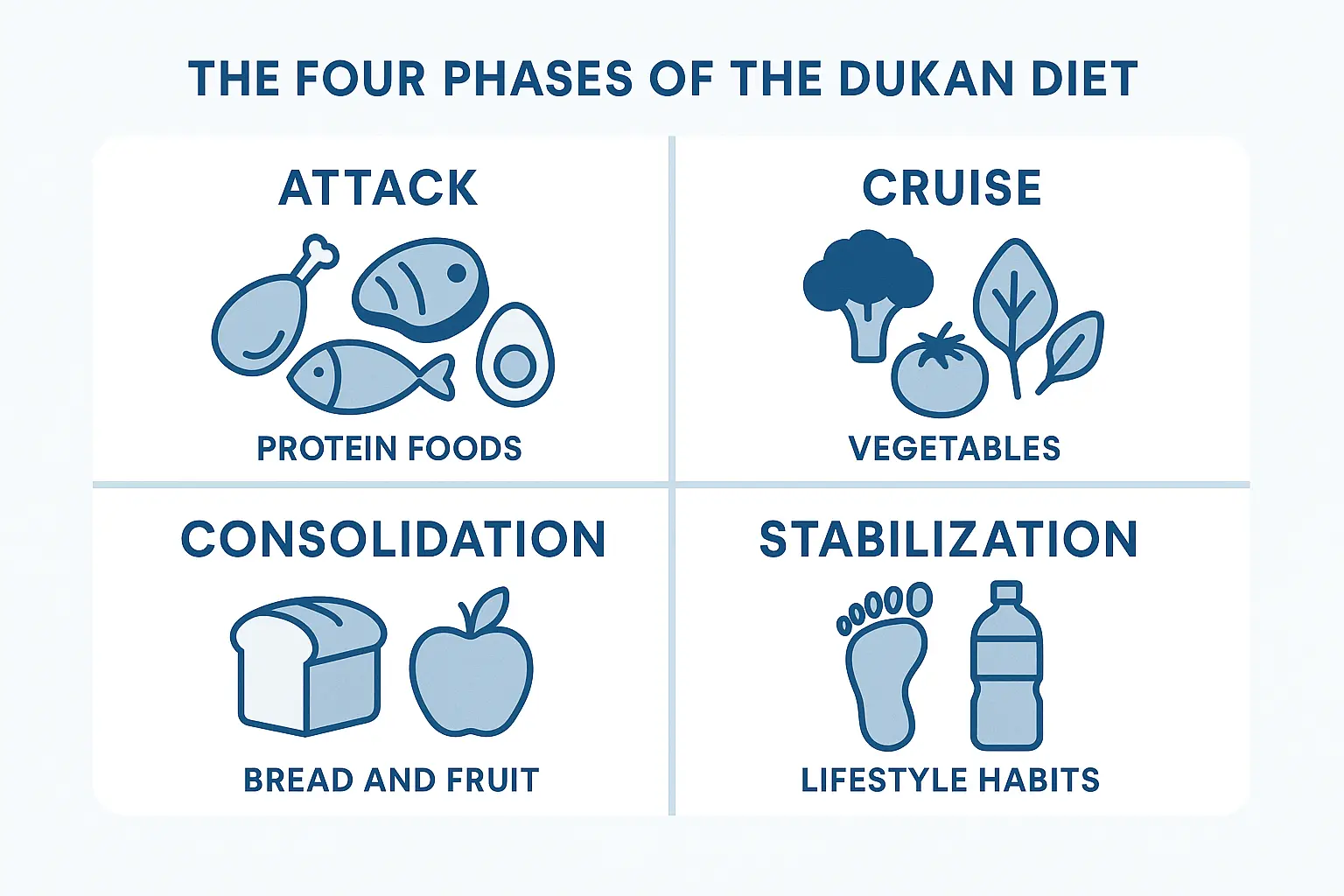
Allowed foods:
Lean meats: chicken, turkey, lean beef, fish, seafood
Eggs and egg whites
Nonfat dairy: Greek yogurt, cottage cheese, skim milk
Plant proteins: tofu, tempeh, seitan
Non-starchy vegetables (from Phase 2 onward): spinach, broccoli, cucumbers, zucchini, bell peppers
Fruits (later phases): apples, pears, berries, peaches
Whole grains (later phases): brown rice, whole wheat bread, oats
Foods to avoid:
High-carb foods: bread, pasta, rice, potatoes (early phases)
High-fat foods: fried items, oils, butter, nuts, seeds
Sugary drinks, desserts, candy
Bananas, cherries, and grapes (too high in sugar for earlier phases)
7-Day Dukan Diet Meal Plan (Sample for Americans)
Day 1 (Attack Phase)
Breakfast: Egg white omelet with turkey bacon
Lunch: Grilled salmon with nonfat Greek yogurt
Dinner: Lean steak with shrimp
Snack: Oat bran pancake
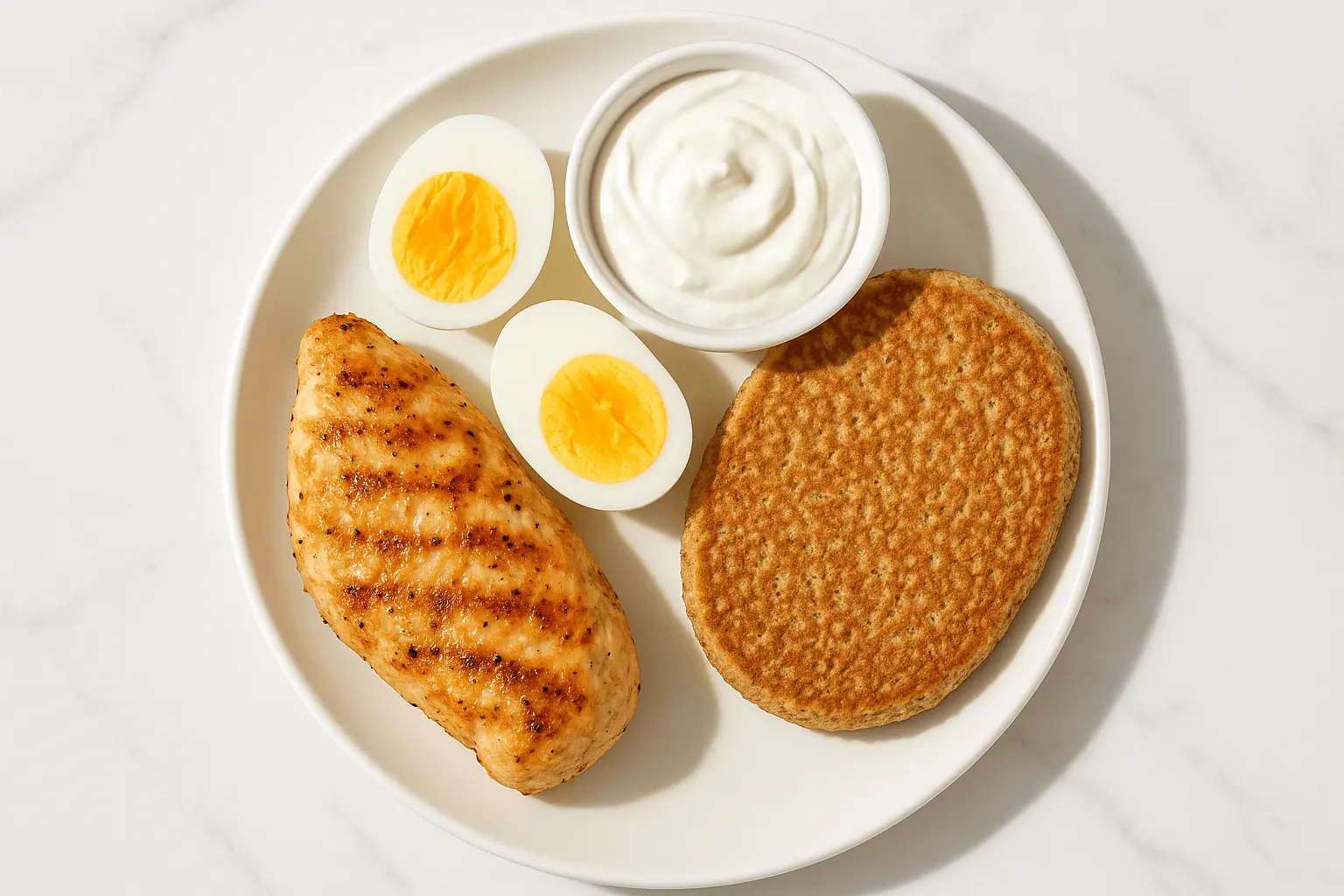
Day 2 (Cruise Phase)
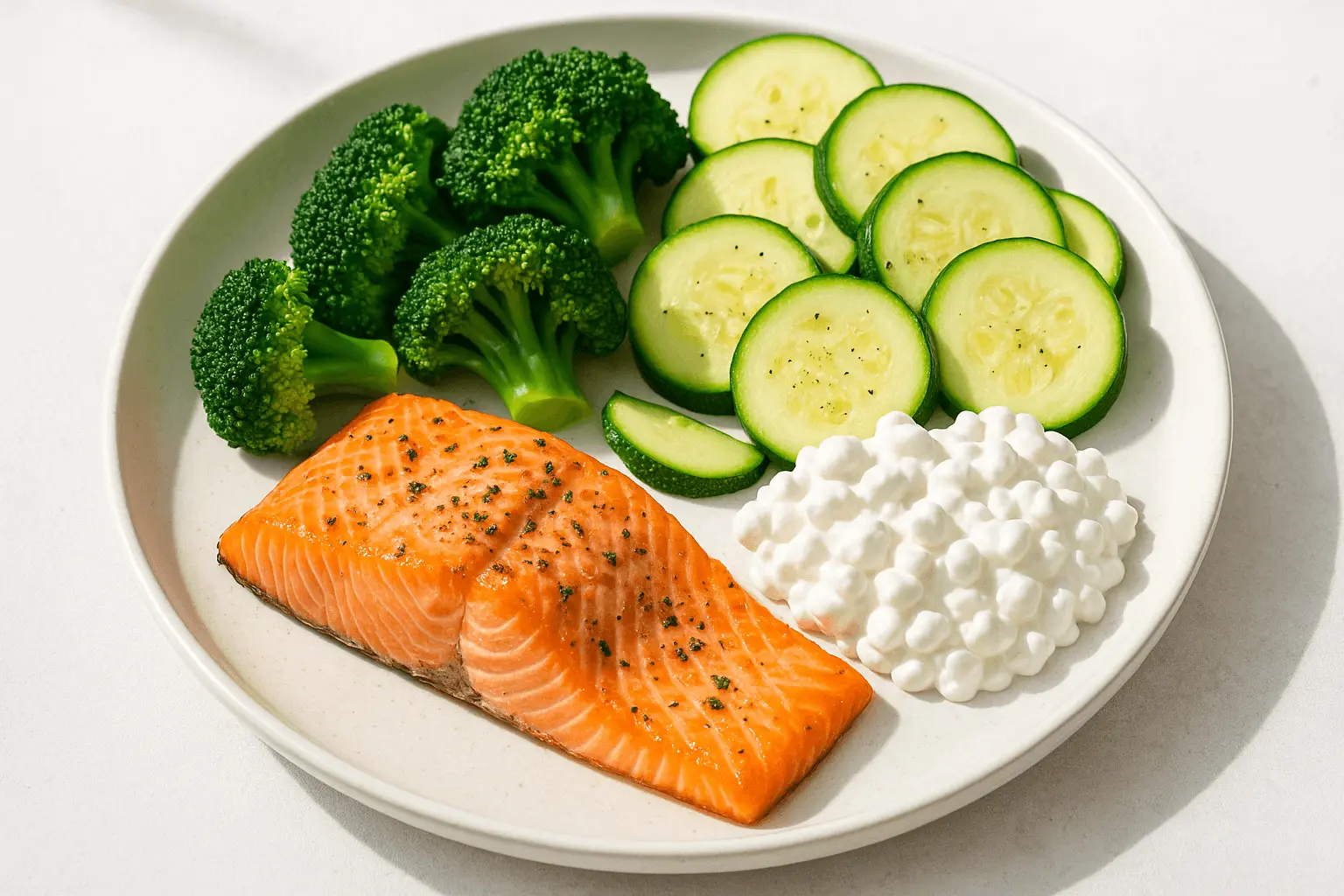
Breakfast: Cottage cheese with cucumber slices
Lunch: Tuna salad with spinach
Dinner: Baked chicken breast with zucchini
Day 3 (Cruise Pure Protein Day)
Breakfast: Scrambled egg whites
Lunch: Turkey burger patty
Dinner: Cod fillet with shrimp
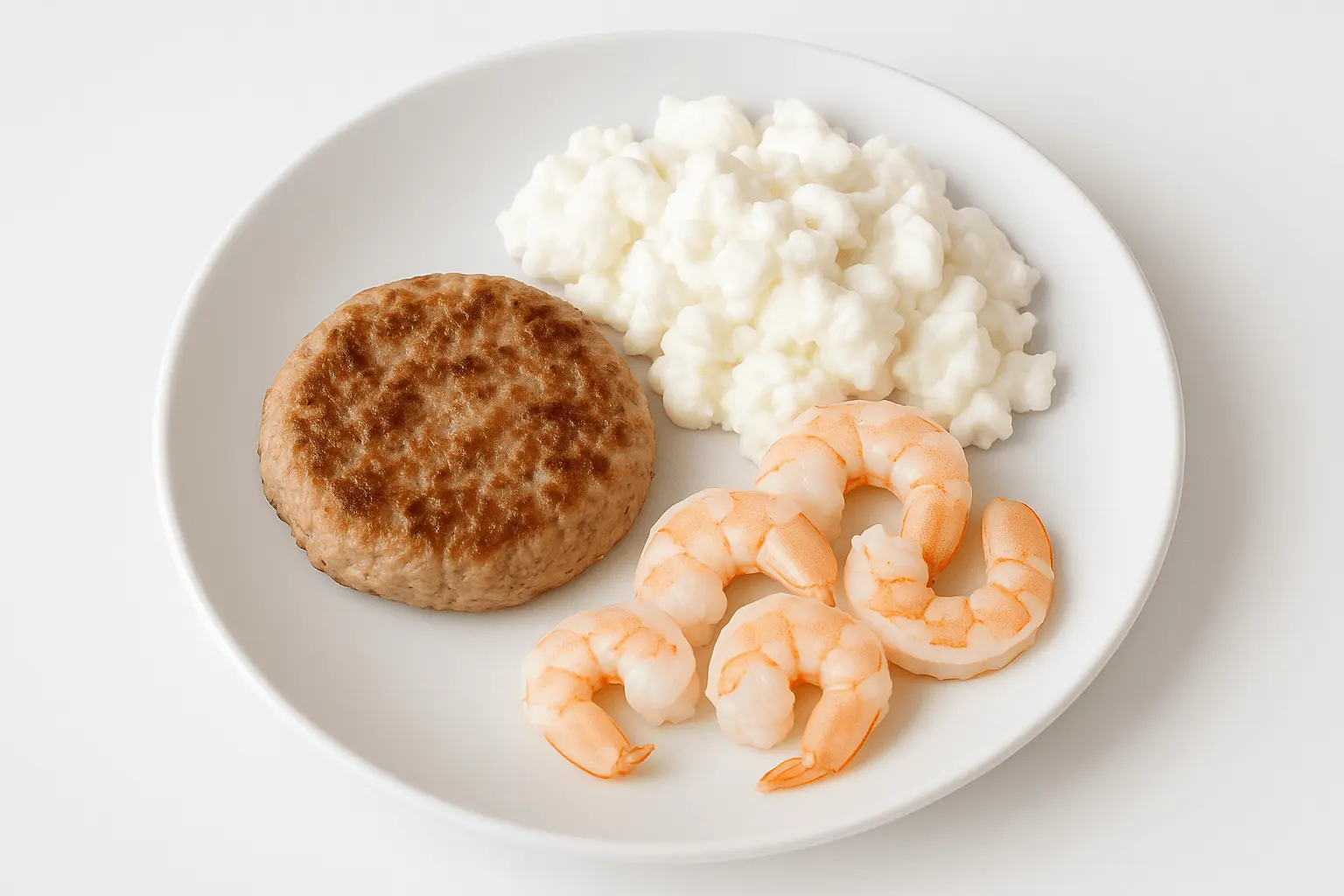
Day 4 (Cruise Protein + Vegetables Day)
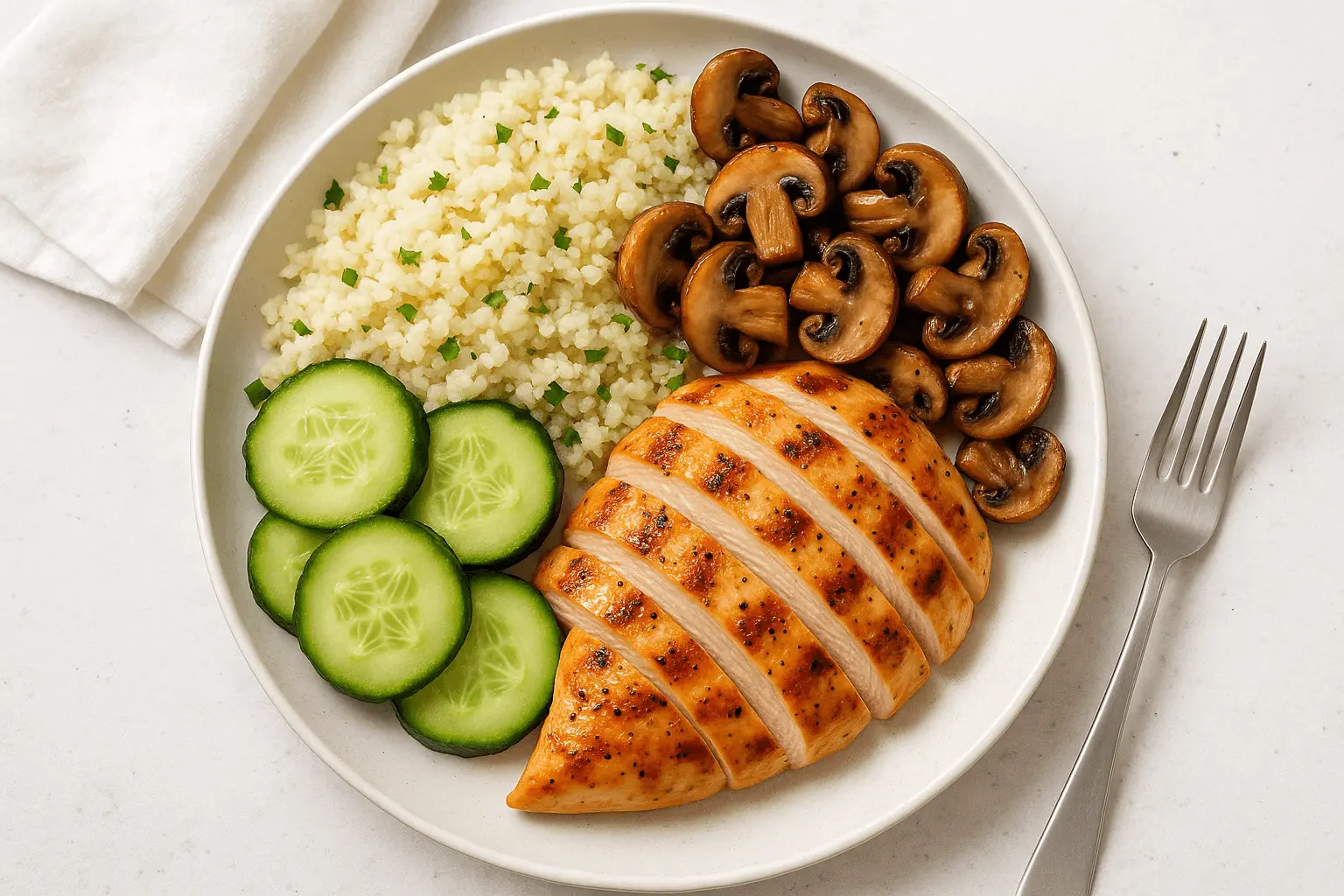
Breakfast: Omelet with mushrooms and spinach
Lunch: Grilled chicken breast with broccoli
Dinner: Salmon with cauliflower rice
Day 5 (Consolidation Phase)
Breakfast: Whole grain toast with boiled eggs
Lunch: Turkey sandwich with avocado on whole wheat bread
Dinner: Pork tenderloin with roasted sweet potato
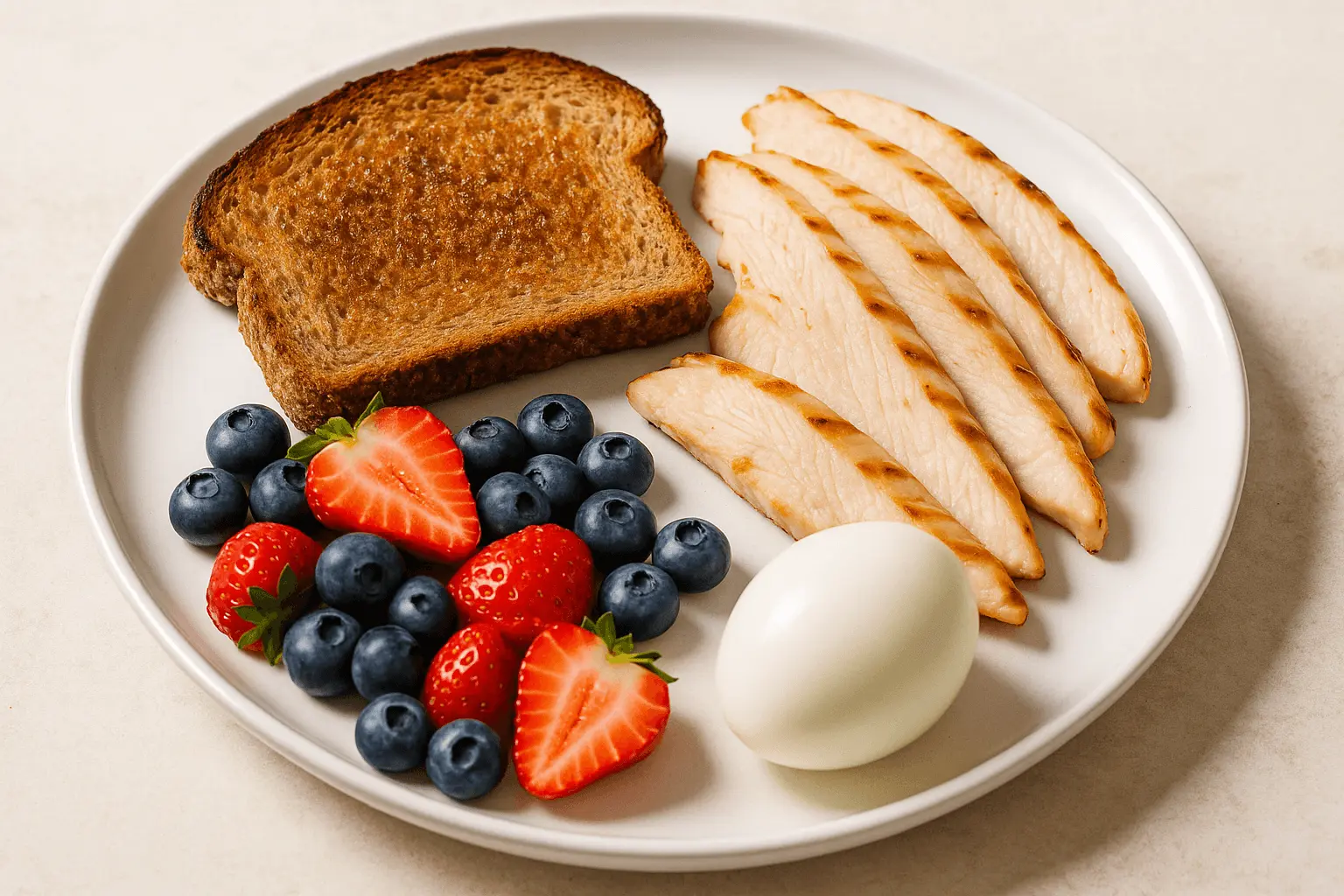
Day 6 (Consolidation Celebration Meal)
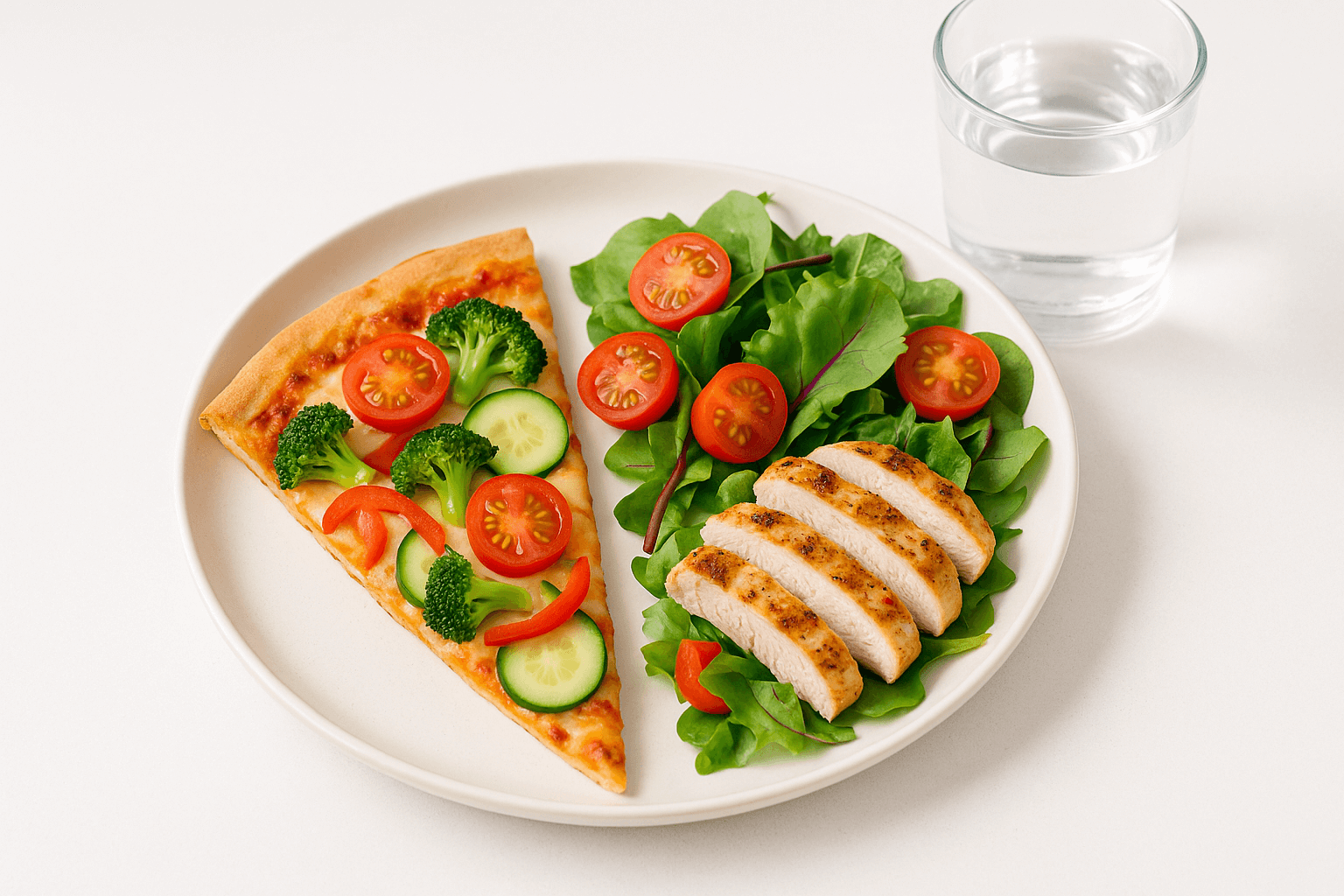
Breakfast: Greek yogurt with oat bran
Lunch: Pizza (celebration meal)
Dinner: Chicken salad with vegetables
Day 7 (Stabilization Phase)
Balanced meals with lean protein, vegetables, and whole grains
Benefits of the Dukan Diet
Rapid weight loss in the first week (4–7 pounds)
Clear structure reduces confusion
Protein-rich meals keep you full longer
No calorie tracking required
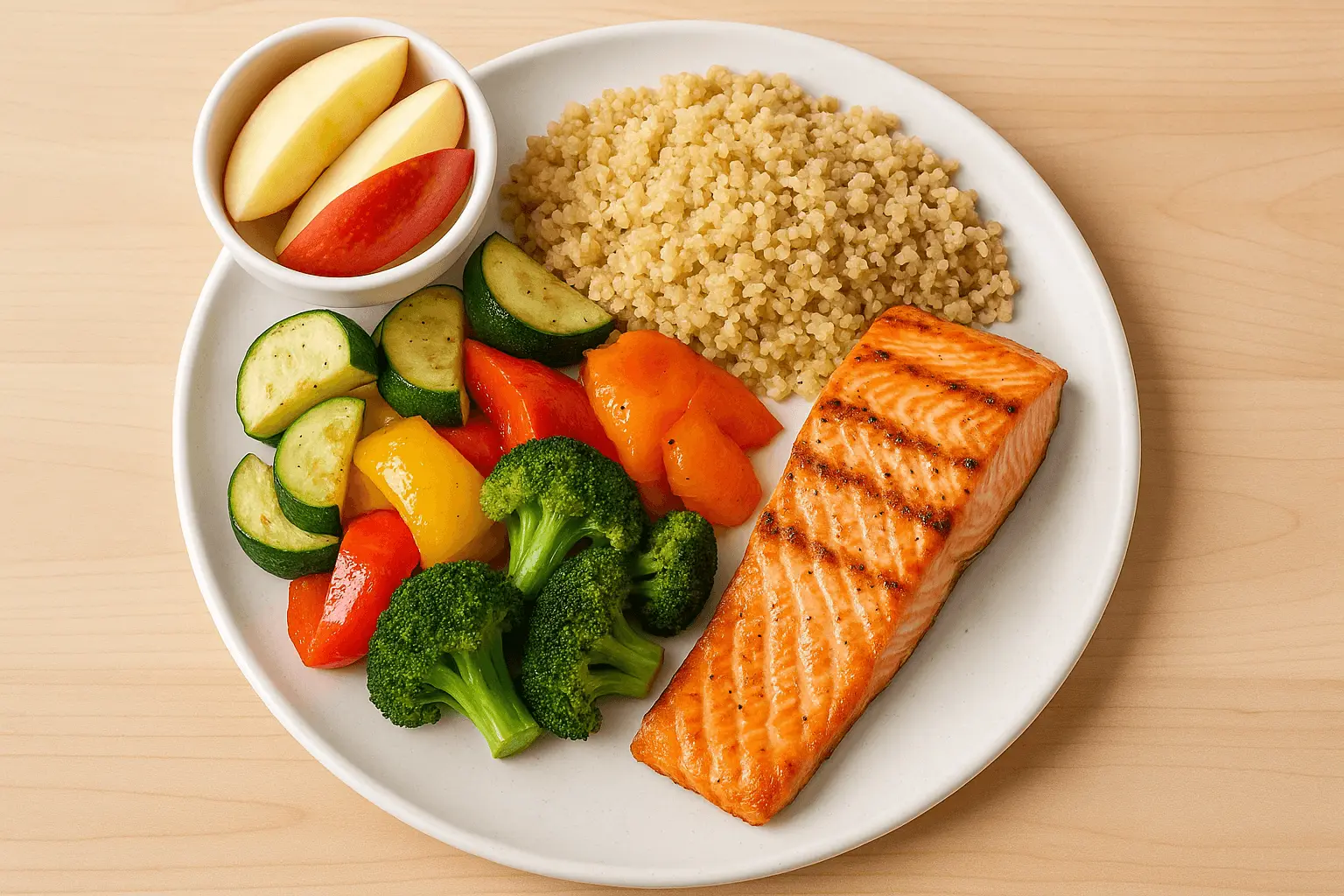
Risks of the Dukan Diet
Restrictive food choices in the first two phases
Low fiber intake may cause digestive issues
Potential strain on kidneys if protein intake is excessive
Hard to maintain long-term compared to balanced diets like Mediterranean or DASH
Final Thoughts
The Dukan Diet offers quick results and a structured plan, which many Americans find appealing. However, its restrictions, potential nutrient gaps, and long-term sustainability challenges make it a mixed choice. For lasting weight management, consider more balanced options like the Mediterranean or DASH diets, or use the Dukan Diet as a short-term strategy with medical guidance.
Frequently Asked Questions
What do you eat on the Dukan Diet?
You eat lean proteins such as chicken, fish, eggs, fat-free dairy, and tofu. Later phases include vegetables, limited fruits, whole grains, and celebration meals.
What foods to avoid on the Dukan Diet?
Avoid high-carb and high-fat foods like bread, pasta, potatoes, fried foods, nuts, sugary drinks, and high-sugar fruits until later stages.
What is the 5-day Dukan Attack?
It is the first phase, usually lasting about five days, where you eat only lean protein and oat bran. This stage produces quick initial weight loss.
What are the four stages of the Dukan Diet?
Attack, Cruise, Consolidation, and Stabilization. Each stage gradually expands the food list while maintaining weight control.
What is bad about the Dukan Diet?
It is restrictive, may cause constipation, and can be difficult to follow long-term. Experts warn it may not provide balanced nutrition for everyone.
